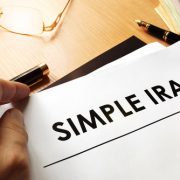Who is a Beneficiary within a Self-Directed IRA?
If you have done enough research on Self-Directed IRAs, then you know that one phrase that always seems to come up is that of the “beneficiary.” But this can be a misleading term. It sounds like the primary owner of the account, but is it really? Just who is the beneficiary, and what should you do to make sure that your Self-Directed IRA has the right “beneficiary”? To answer those questions, we decided to do a deeper dive on this term and what it means within the context of retirement.
The Beneficiary: Starting with a Definition
Let’s turn to the IRS website to learn exactly how they define a beneficiary in this context.
A beneficiary can be any person or entity the owner chooses to receive the benefits of a retirement account or an IRA after he or she dies. Beneficiaries of a retirement account or traditional IRA must include in their gross income any taxable distributions they receive.
Although the word “beneficiary” sounds like the primary owner of the account—i.e., the person receiving the benefits of the account—within the context of retirement investment, the beneficiary is really a designee as to who should receive these benefits in the event of the death of the primary account holder. In essence, a beneficiary is naming an “heir” for the account—however, we should warn that there are many details that make a beneficiary different than an heir, which is why a separate word is used.
Who Can Be a Beneficiary?
One of the most popular designees as a beneficiary is a spouse—after all, a retirement investor who has a substantial Self-Directed IRA might want to make sure that their spouse is taken care of in the event of their death.
When a spousal beneficiary inherits an IRA from a deceased spouse, they have a few options. First, they can designate themselves as the account owner of the IRA, which essentially moves the IRA to their possession—as if it is their own IRA.
Another option is to treat it as their own, but roll it over into another plan, such as rolling it over into a qualified employer plan. There may also be options for rolling it over into a qualified employee annuity plan, or a section 403(a) plan, according to the IRS website.
The third option is to treat themselves as the beneficiary and not take the role of owner, instead receiving the benefits of the IRA.
One important thing to note: the beneficiary can only take on ownership of the IRA if they were a spouse. “If the inherited traditional IRA is from anyone other than a deceased spouse,” the IRS notes, “the beneficiary cannot treat it as his or her own.”
This means that the holder of the Self-Directed IRA should think about what kinds of options they want to leave behind. Designating a beneficiary for a Self-Directed IRA can be an important part of financial planning and estate planning. Even though the individual investing within the Self-Directed IRA should ideally get that money back in the form of distributions upon retirement, this is not always how life goes. Designating a beneficiary on the account helps clarify the estate plan.
What’s Next?
As American IRA is a Self-Directed IRA administration firm and not a financial advisor, we cannot tell you who to name as beneficiary, nor do we make specific investment recommendations. But we can inform you about decisions like this so that you are aware they exist. Interested in learning more about Self-Directed IRAs? Contact American IRA, LLC at 866-7500-IRA (472) for a free consultation. Download our free guides or visit us online at www.AmericanIRA.com.







